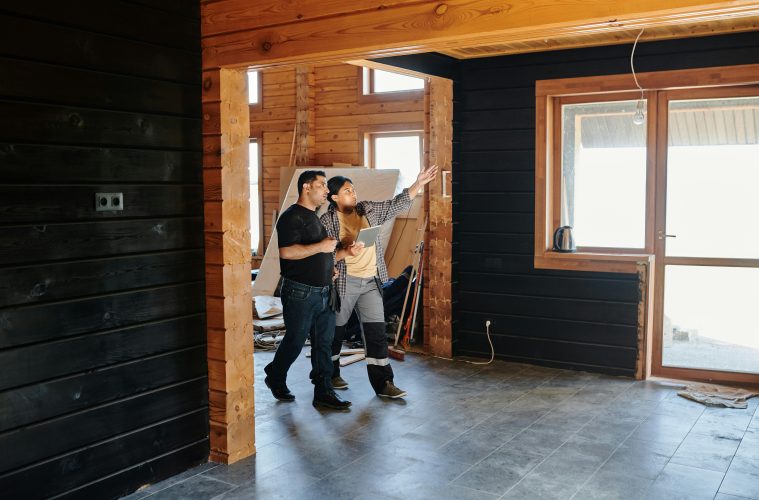The way we approach renovation projects has profound implications for sustainability. A growing number of homeowners and businesses are transitioning towards greener renovation practices that benefit the environment and offer long-term economic advantages.
These decisions provide a dual advantage. They contribute positively to the planet while enhancing property value, comfort, and health. This article explores the various facets of sustainable renovation decisions, examining their impact in both the short and long term and how these choices resonate through ecological, financial, and social dimensions.
Understanding Sustainable Renovation
Sustainable renovation refers to the modification of existing buildings to increase efficiency, reduce waste, and minimize the ecological footprint. This approach encompasses multiple practices, from using eco-friendly materials to implementing energy-efficient appliances.
A crucial aspect of sustainable renovation is assessing the existing structure’s life cycle, identifying areas for improvement, and integrating resources that facilitate long-term sustainability. The transition towards sustainable renovation helps in conserving resources and addresses the pressing challenges associated with climate change.
The Benefits of Sustainable Renovation
Investing in sustainable renovations can lead to significant benefits, both environmentally and financially. Energy-efficient upgrades, such as improved insulation and modern HVAC systems, facilitate reduced energy consumption, leading to lower utility bills. These savings accumulate, enhancing the property’s value and profitability. Many governmental bodies offer tax incentives and rebates for sustainable renovations, making this approach even more appealing.
Another core advantage of sustainable renovation is the positive effect on occupant health and comfort. Utilizing non-toxic materials can enhance indoor air quality, a critical factor in wellness. Poor indoor air quality can lead to various health issues, particularly respiratory problems. Thus, by opting for environmentally friendly products, property owners foster a healthier living environment and contribute to the long-term well-being of themselves and their families.
The Role of the Construction Industry
The construction industry plays a pivotal role in the push towards sustainability. By embracing innovative techniques and materials, the sector can dramatically reduce its environmental impact. Many companies now prioritize sustainable sourcing for building materials, sourcing from suppliers who adhere to eco-friendly practices. The integration of renewable resources, like bamboo and recycled steel, can streamline the renovation process. Engaging a skilled reinstatement crew ensures that projects meet sustainability standards without compromising quality. Professionals in the field are often equipped with the latest knowledge on materials and techniques to ensure that renovations align with sustainable principles.
Challenges in Implementing Sustainable Renovation
Despite the evident benefits, hurdles remain in the widespread adoption of sustainable renovation practices. One common challenge is the perception of high upfront costs associated with sustainable materials and technologies. Understanding that these expenses often lead to savings in the long run can encourage willingness to invest. It’s critical to communicate the long-term savings potential effectively to overcome this perception.
The lack of awareness among homeowners regarding the benefits of sustainable renovations poses a barrier. Many people are simply unaware of the various options available or the specific advantages tied to sustainability. Hence, outreach efforts from both industry professionals and non-profit organizations can play a pivotal role in spreading awareness and educating consumers on the importance of making sustainable choices.
Successful Sustainable Renovations
Several examples around the globe illustrate the significant impact of sustainable renovation decisions. The renovation of the Bullitt Center in Seattle stands as a beacon of sustainable architecture. Considered one of the greenest commercial buildings in the world, the center boasts a net-zero energy design, meaning it produces as much energy as it consumes. Energy-efficient technology and sustainable materials used in this renovation serve as a model for future projects. Such initiatives encourage other businesses and homeowners to take steps towards their sustainable goals.
Residential projects illustrate the impact of sustainable renovation. A notable example is the retrofitting of a historic home in New Orleans, where homeowners installed energy-efficient windows and solar panels while maintaining the property’s aesthetic heritage. This project increased energy efficiency and preserved the character of the neighborhood, showcasing that sustainable practices can harmonize with traditional architecture.
Sustainable Trends
As society becomes more attuned to environmental issues, the trend of sustainable renovation will undoubtedly gain momentum. Emerging technologies such as smart home devices and energy-efficient appliances are becoming more accessible and affordable for the average consumer. The rise of green building certifications helps establish industry standards, encouraging more projects to pursue sustainability. Public awareness of climate change and environmental issues emphasizes the need for changes in building practices.
The concept of adaptive reuse is becoming popular. This approach involves repurposing old, defunct structures instead of demolishing them, thereby reducing waste and conserving resources. As urban areas continue to grow, this strategy is sustainable and fosters a sense of cultural heritage as communities preserve their historic architecture.
As the importance of sustainability becomes increasingly evident, the decisions made during renovations will influence environmental, economic, and social landscapes for generations to come. Emphasizing energy efficiency, utilizing skilled labor, and encouraging responsible sourcing are vital for creating spaces that are aesthetically pleasing and guardians of our planet. The transition towards sustainable renovation is a collective effort, paving the way for innovative solutions that stand to benefit both property owners and future communities.
Published by HOLR Magazine.



